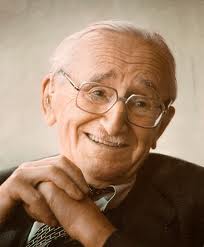Trickle-down economics is a term that has been widely used in political debates, often as a criticism of supply-side economics. However, its usage is often misunderstood and oversimplified. Trickle-down economics is often associated with tax systems and hence is considered to be part of public finance. When taxes of the rich are reduced then the benefit will “trickle down” or will disperse to the rest of the population. Many experts have opposed this and it’s legitimate too but due to this belief, every tax cut for the rich is considered to be part of trickle-down economics.
Trickle-down economics is not solely associated with public finance or tax cuts. In a broader sense, it means that benefiting the person on top will gradually start benefiting those below them. It’s like saying one step from the top authority benefits others below. Trickle-down is simply a type of top-down approach and a top-down approach is when the decision-making of a central authority is communicated to all. It advocates centralization over decentralization.
It is important to distinguish trickle-down economics from supply-side economics. Supply-side economists do not specifically support trickle-down economics as a theory. While they may support tax reductions, their rationale is often different. Supply-side economics emphasizes avoiding adverse effects on consumer surplus, increasing tax revenue in some cases, and addressing incentive problems that arise when a significant portion of income is taken away in taxes.
Economist Thomas Sowell, for example, has criticized the concept of trickle-down economics and noted that it was never advocated by any economist from the supply-side perspective. Supply-side economics rather advocates a bottom-up approach over a top-down approach. It says that workers work and produce the output and then those output are sold in the economy. The first process starts with workers, not from any central power. That wouldn’t be a natural process of how the economy works.
What might come shocking is that trickle-down belongs more to Keynesian economics or demand-side economics favors the top-down approach and use government authority to increase aggregate demand and employment in the economy. Keynesians who are seen criticizing the supply side are in reality themselves using a similar method.
Both supply-side and demand-side economics support capitalism but differ in their preferred approaches. Supply-side economics leans toward a bottom-up approach, while demand-side economics favors a top-down approach.
It is worth noting that political rhetoric and actions do not always align perfectly with economic theories. Former president of the USA Barack Obama who was one to make political statements against tax reduction for the rich, portraying himself to be an opponent of trickle-down economics was himself the one to provide large amounts of funds to banks during the Great Recession of 2008-09 saving them so that all benefit. That’s a real-world example of trickle-down policy but it isn’t much talked about because it has no direct relationship with taxation policy.
In crony capitalism government to increase the economic growth fund big firms that will make investments and those investments will help in generating employment. This is another form of trickling down. Some economists tend to look at the macro level and not the micro foundation of the economy. In crony capitalism where few businesses are supported by the government are growing which provides macro variables to grow and therefore probably for them the people are growing too. This is trickle-down logic!
It is important to recognize that trickle-down economics is not a scientific theory but a political one. The term was introduced by Humorist Will Rogers who jokingly advised in a column talking about republican policy in 1932. There has been no economic theory on it. The term has been used in history to criticize the likes of Reagan tax cut reforms but a fact to be mentioned is that the tax revenue didn’t differ much despite the reduction in tax rates. The inflation-adjusted tax revenue of FY 1981 was approximately $301 billion and in FY 1986 it was approximately $317.8 billion. The tax cut reform of Kennedy proved to be even more effective.
Raising the tax on the rich isn’t a smart choice as one intuitively believes it to be. People are able to avoid taxes by investing in tax-exempt securities or in other countries. Raising taxes on the rich drives the economy backward and deducting it surely be fairer and more economical but that doesn’t mean tax cuts would boost growth, it is just that taxes are no more a barrier to growth. Also, taxes were never meant to be redistribution tools rather they are prices of public goods and services.
The prevalence of top-down approaches can be observed in various regions worldwide, often stemming from government’s utilization of manipulative fiscal policies or inflationary monetary policies. Interestingly, those who oppose trickle-down economics are often proponents of top-down theories and policies themselves.



